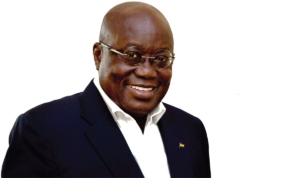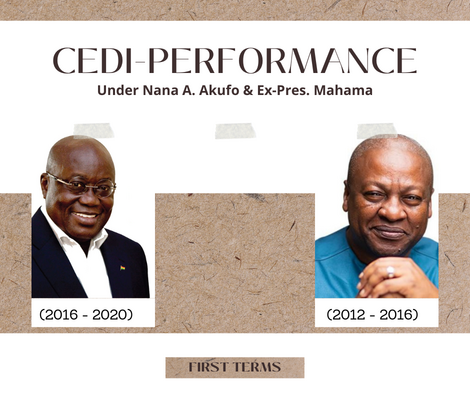
Author: Bernard Quayson (IT-Specialist)
INTRODUCTION
John Dramani Mahama became the President of Ghana on July 24, 2012, following the sudden death of his predecessor, John Atta Mills. Mahama, who was serving as the Vice President at the time, was constitutionally mandated to assume the presidency and complete the remaining term. Mahama ran for a full term in the 2012 elections and won, becoming Ghana’s first president to have served in all levels of political office.
However, in the 2016 elections, Mahama lost his bid for a second term to Nana Akufo-Addo. Akufo-Addo won with 53.85% of the vote, while Mahama secured 44.40%. The peaceful transfer of power was widely celebrated as a testament to Ghana’s democratic maturity.
Nana Akufo-Addo, on the other hand, became the President of Ghana on January 7, 2017, after winning the 2016 presidential elections. In the 2020 presidential elections, Akufo-Addo sought re-election and faced a strong challenge from his main rival, John Dramani Mahama. Akufo-Addo won the election with 51.59% of the vote, while Mahama garnered 47.36%. However, the results were disputed by the opposition, and Mahama filed a petition with the Supreme Court to challenge the outcome.
In March 2021, the Supreme Court upheld Akufo-Addo’s victory, dismissing Mahama’s petition. The verdict was widely celebrated as a victory for democracy and a demonstration of the independence of Ghana’s judiciary.
DEPRECIATION
Depreciation refers to the decrease in value of a currency relative to other currencies or goods and services over time. In the context of the Ghanaian economy, the depreciation of the Ghana cedi means that the value of the cedi has decreased relative to other currencies or goods and services.
Factors that can contribute to the depreciation of Ghana cedi
Inflation: Describes the general increase in prices of goods and services in an economy over time. High levels of inflation can lead to a decrease in the value of a currency, as the purchasing power of the currency decreases.
Balance of trade: If Ghana is importing more goods and services than it is exporting, this can lead to a decrease in demand for the cedi, as people and businesses need to exchange their cedis for foreign currency in order to make payments for imports. This can lead to a depreciation of the cedi.
Political instability: Political instability can lead to a lack of investor confidence in a country, which can lead to a decrease in foreign investment and a decrease in demand for the currency. If the demand for the currency is less, then the currency loses value, and this can also lead to a depreciation of the cedi.
Government debt: High levels of government debt can lead to a decrease in confidence in a country’s economy, which can lead to a decrease in demand for the currency.
Interest rates: If interest rates in Ghana are lower than in other countries, this can lead to a decrease in demand for the cedi, as investors may choose to invest their money in other countries with higher interest rates.
NB: It’s important to note that these factors are often interrelated and can compound each other, leading to a more significant impact on the currency.
Data from the four-year administration (2012-2016) of former President Mahama

John Dramani Mahama
Statistical data from the administration (2012-2016) of the former President of Ghana.
- INFLATION
John Dramani Mahama became the President of Ghana by election in 2012. He won the presidential election held in December 2012 and was inaugurated as the President of Ghana on January 7, 2013. At the time of his inauguration, the inflation rate in Ghana was 8.8% according to the website of the Ghana Statistical Service, which is the official agency responsible for collecting, compiling, and disseminating statistical information in Ghana. And According to the Bank of Ghana, the cedi had depreciated by about 1.5% against the US dollar from January 2012 to January 2013.
When Mahama left the office for Nana Akufo-Addo on January 7, 2017, the inflation rate in Ghana was 15.4%, as reported by the Bank of Ghana in its Monetary Policy Committee press release issued on January 23, 2017.
- GOVERNMENT DEBT
Debt stock is a key indicator of the country’s fiscal health, and it is regularly monitored and reported by the Bank of Ghana and other institutions.
The government’s debt stock in Ghana as of the end of December 2012, just before Mahama was inaugurated as President on January 7, 2013, was GH¢35.1 billion (about $17.6 billion at the time), as reported by the Bank of Ghana in its Summary of Economic and Financial Data for January 2013. When Mahama left the office for Nana Akufo-Addo on January 7, 2017, the government’s debt stock in Ghana was GH¢122.3 billion (about $28.3 billion), according to the Bank of Ghana. This figure represented about 62.4% of Ghana’s Gross Domestic Product (GDP) at the time.
- INTEREST RATES
Before Mahama’s inauguration on January 7, 2013, the Bank of Ghana had set its policy rate at 15%, as stated in the press release issued by the Bank of Ghana on November 19, 2012. The policy rate is the rate at which the Bank of Ghana lends to commercial banks, and it is used as a benchmark for determining the interest rates that banks charge their customers. When Mahama left the office for Nana Akufo-Addo on January 7, 2017, the Bank of Ghana’s policy rate was at 25.5%, as stated in their press release issued on November 21, 2016.
Data from the four-year administration (2016-2020) of President Nana Akufo-Addo

Nana Addo Dankwa Akufo-Addo.
Statistical data from the administration (2016-2020) of the President of Ghana.
- INFLATION
When Nana Akufo-Addo first became President of Ghana on January 7, 2017, the inflation rate in Ghana was 15.4%, as reported by the Bank of Ghana in its Monetary Policy Committee press release issued on January 23, 2017. The inflation rate in Ghana in the fourth year of Nana’s administration before the outbreak of COVID-19 was 7.9%, according to the Bank of Ghana’s report in its Monetary Policy Committee press release issued on January 27, 2020.
- GOVERNMENT DEBT
According to a report by the Bank of Ghana in its Summary of Economic and Financial Data for January 2017, the government’s debt stock was GH¢122.3 billion (about $28.3 billion) when Nana Akufo-Addo was first inaugurated as President of Ghana on January 7, 2017. And the government’s debt stock in before the outbreak of COVID-19 was GH¢214.9 billion (about $37.6 billion at the time), as reported by the Bank of Ghana in its Summary of Economic and Financial Data for December 2019.
- INTEREST RATES
When Mahama left the office for Nana Akufo-Addo on January 7, 2017, the Bank of Ghana’s policy rate, which is the rate at which commercial banks can borrow from the central bank, was 25.5%, as reported by the Bank of Ghana in its Monetary Policy Committee press release issued on January 23, 2017. The interest rate before the outbreak of COVID-19 was 16%, according to a report by the Bank of Ghana in its Summary of Economic and Financial Data for December 2019.
SUMMARY OF STATS.
- Between 2013 and 2017, during the administration of Ex-president Mahama, the inflation rate in Ghana increased from 8.8% to 15.4%. This represents a rate of change of 75%, indicating that inflation rose by 75% during his term in office.
- Between January 2017 and before the outbreak of Covid, the inflation rate in Ghana decreased from 15.4% to 7.9%. This represents a rate of change of -48.4%, indicating that inflation decreased by 48.4% during the administration of President Nana Addo.
Submission1:
This data implies that the economic policies implemented during Nana Akufo Addo’s administration before Covid-19 were more effective than Mahama’s administration.
During Mahama’s administration, Ghana’s debt stock increased from GHS 35.1 billion in January 2013 to GHS 122.3 billion in January 2017, representing a debt stock rate increase of approximately 248%.
Similarly, during Nana Akufo-Addo’s administration, Ghana’s debt stock increased from GHS 122.3 billion in January 2017 to GHS 214.9 billion in December 2019, representing a debt stock rate increase of approximately 76%.
Submission2:
Based solely on the information provided about the debt stock rates, it appears that the debt stock rate during Mahama’s term of office increased at a slower rate than during Nana Addo’s term of office. This suggests that, in terms of debt management, Mahama’s administration may have been relatively more successful than Nana Addo’s administration.
On January 7, 2013, when John Mahama took office as President of Ghana, the interbank exchange rate between the Ghanaian cedi and the US dollar was GH¢1 = $0.5018, according to the Bank of Ghana’s data. And On January 7, 2017, the interbank exchange rate between the cedi and the US dollar was GH¢1 = $0.2378. This represents a depreciation of about 52.65% over the four-year period.
The interbank exchange rate between the cedi and the US dollar as of December 31, 2019 (before the outbreak of the Covid-19), was GH¢1 = $0.1736. This represents a depreciation of about 27.0% over the three-year period of Nana Akufo Addo’s term of office. And GH¢ 1 to $0.1703 as of December 31, 2020. This means that 1 USD was equal to approximately 5.8691 GHS on that date, and represent a depreciation of about 28.38% over the four-year period.
Submission3:
The depreciation rate of 28.38% from January 7, 2017, to December 31, 2020, is considered a better performance of the cedi over the four-year period of Nana Akufo Addo’s administration compared to a depreciation rate of 52.65% over the four-year period of John Dramani Mahama’s administration, even at the time of Covid outbreak.
REFERENCE: Monetary Policy – Bank of Ghana (bog.gov.gh)

